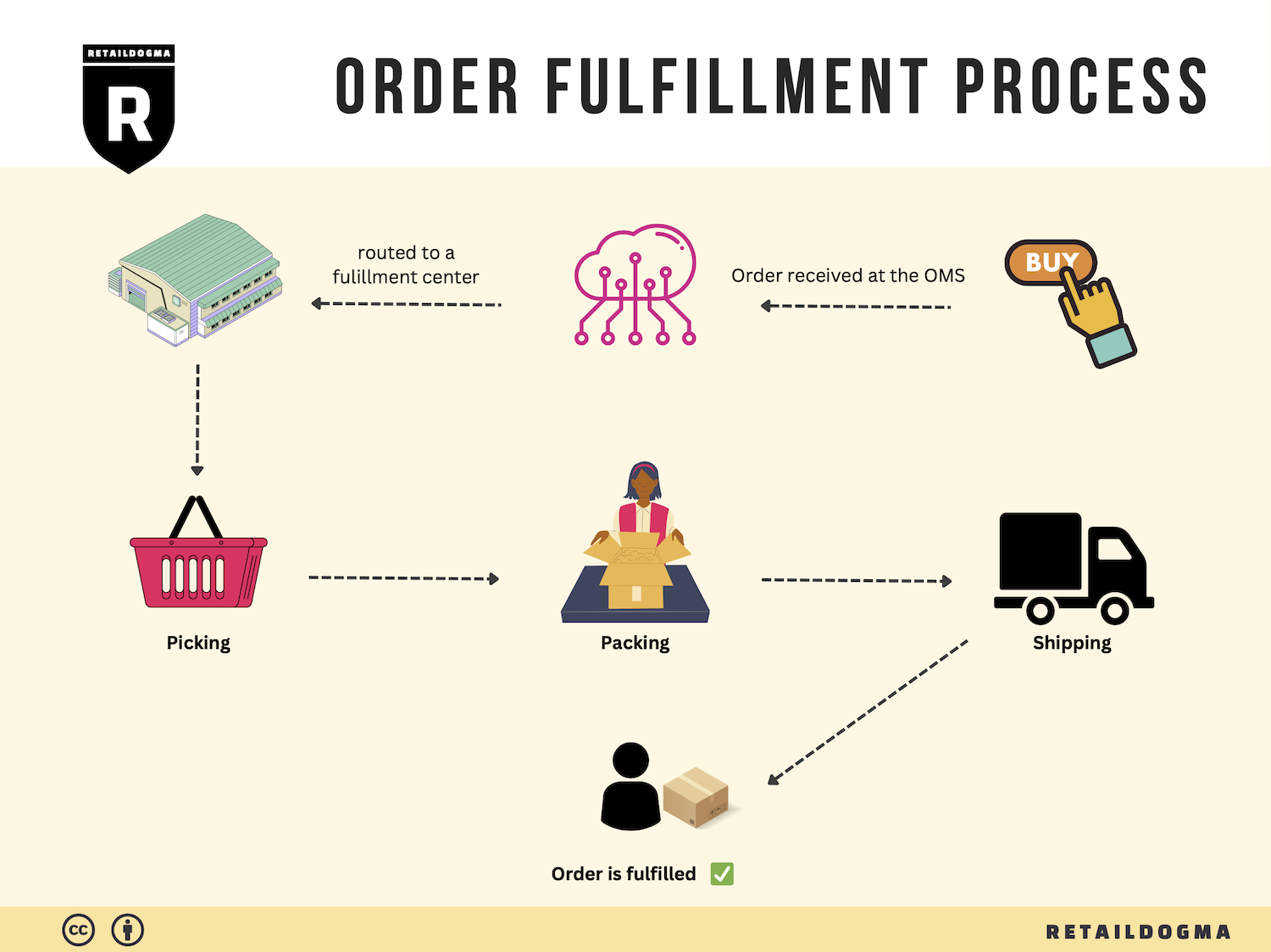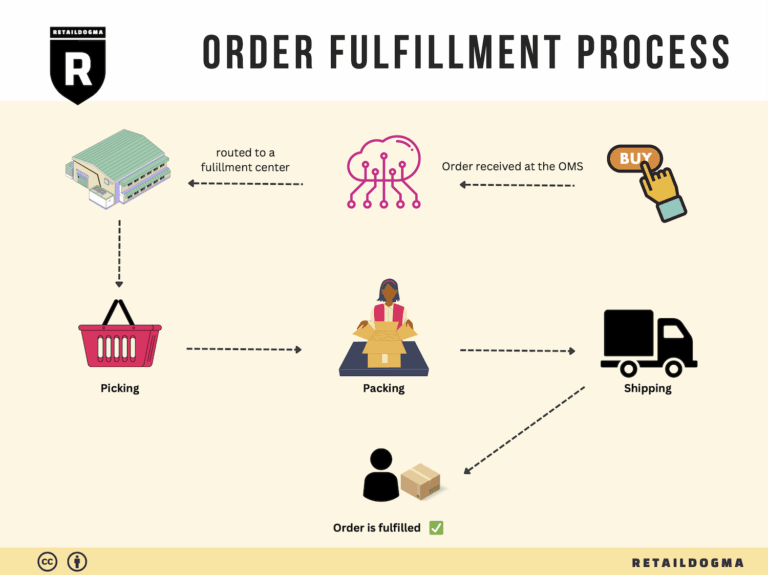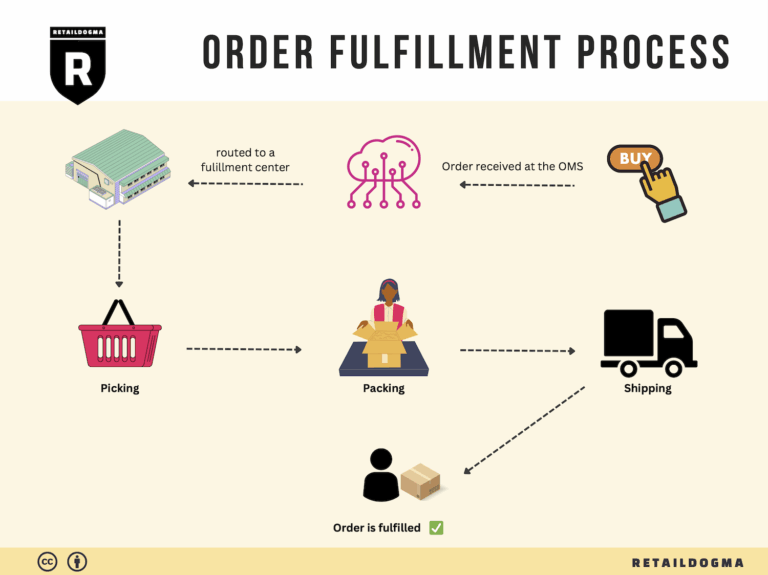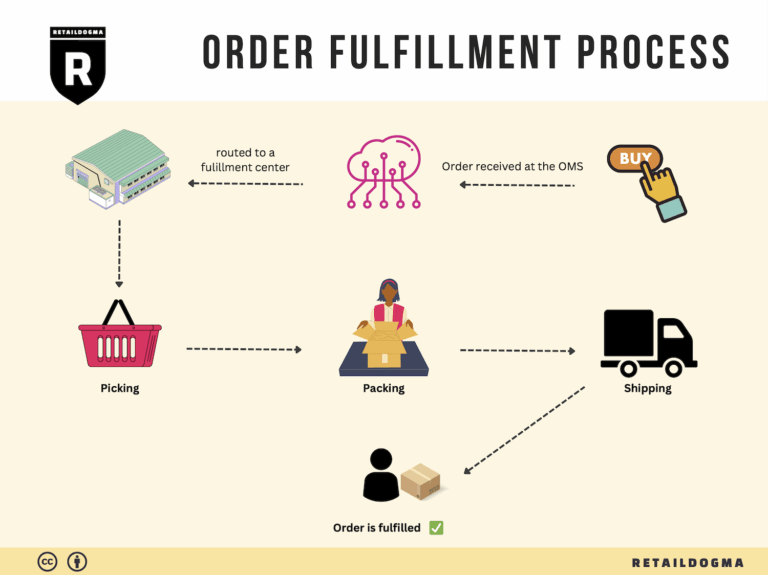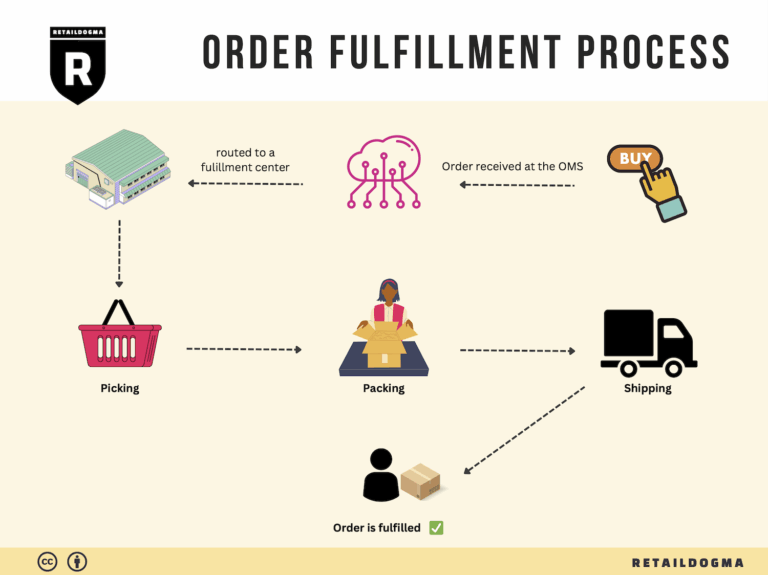What Is A Fulfillment Center? A Complete Guide (2025)
What is E-commerce Fulfillment? An Introduction for Growing Businesses
The Challenge of Order Fulfillment for Growing E-commerce Businesses
As an e-commerce business owner, you might have experienced the overwhelming task of packing and shipping orders. This crucial aspect of your business can quickly become a bottleneck, diverting your attention from growth strategies and customer engagement. Efficient fulfillment is more than just a logistical challenge; it directly impacts customer satisfaction, repeat business, and ultimately, your bottom line. Understanding how to effectively manage this process is essential for scaling your operations.
Defining E-commerce Fulfillment
E-commerce fulfillment is the comprehensive process of getting a product from your warehouse or fulfillment center to your customer’s doorstep. This encompasses everything from inventory management and order processing to packing, shipping, and handling returns. As your business grows, mastering fulfillment becomes increasingly complex, but with the right approach, it can also become a powerful competitive advantage.
What This Guide Will Cover
This guide will delve into various fulfillment models, including Third-Party Logistics (3PL) and Fulfillment by Amazon (FBA), helping you understand the pros and cons of each. We will explore core services integral to fulfillment, such as inventory storage, order picking and packing, shipping logistics, and returns management. Additionally, we will provide practical tips on how to choose the right fulfillment partner that aligns with your business needs and growth ambitions.
Pricing is another critical aspect we will discuss. Understanding the costs associated with different fulfillment options can empower you to make informed decisions that enhance your profitability.
Goal of This Guide
Ultimately, our goal is to equip you with the knowledge and tools to make smart, strategic decisions about your logistics and fulfillment processes. By leveraging the right fulfillment strategies and partners, you can focus more on what you do best—growing your business and delighting your customers. Whether you’re a startup looking to scale or an established brand seeking to optimize your operations, this guide will serve as a valuable resource on your journey to successful e-commerce fulfillment.
What You’ll Learn In This Guide
- What is E-commerce Fulfillment? An Introduction for Growing Businesses
- The Order Fulfillment Process: From ‘Buy’ Button to Customer’s Door
- Comparing Fulfillment Models: In-House vs. 3PL vs. Dropshipping
- A Deep Dive into Amazon FBA: Pros, Cons, and Who It’s For
- Core Services Offered by Fulfillment Centers
- How to Choose a Fulfillment Partner: A 6-Point Checklist
- Understanding Fulfillment Pricing: A Breakdown of Common Fees
- Frequently Asked Questions (FAQs) about Fulfillment
- Conclusion: Is Outsourcing Fulfillment the Right Move for Your Business?
- Important Disclaimer
The Order Fulfillment Process: From ‘Buy’ Button to Customer’s Door
1. Receiving Inventory
The first step in the order fulfillment process begins with receiving inventory from suppliers. This phase involves checking the quality and quantity of goods delivered against purchase orders. A critical aspect of this step is the use of Stock Keeping Units (SKUs), which are unique identifiers for each product variant. This ensures that all items are accounted for and correctly categorized in the inventory system.
Importance: Proper receiving processes help mitigate errors, reduce shrinkage, and ensure that the inventory management system is updated accurately. Any discrepancies must be addressed immediately to maintain operational integrity. Efficient receiving processes lay the groundwork for smooth operations in later stages, ensuring that the right products are available for order fulfillment.
2. Warehouse Storage
Once inventory has been received and verified, the next step is warehouse storage. This involves strategically placing items in the warehouse to optimize space and facilitate easy retrieval. Implementing a well-organized storage system, such as bin locations or zone picking, allows for quicker access to products when orders are placed.
Importance: Effective warehouse storage is crucial for minimizing the time spent locating items, which directly impacts order fulfillment speed. By categorizing and storing products logically, businesses can enhance their operational efficiency and reduce the likelihood of errors during the picking process. Additionally, a well-structured warehouse can significantly lower operational costs and improve scalability as order volumes increase.
3. Order Picking
The next stage in the order fulfillment process is order picking, where warehouse staff retrieve the products ordered by customers. This step often utilizes pick lists, which are documents or digital records indicating the items and quantities required for each order. Depending on the volume and complexity of orders, businesses can implement various picking methods, such as single order picking, batch picking, or wave picking.
Importance: Order picking is a critical step that influences both speed and accuracy in fulfillment. Efficient picking processes help ensure that customers receive the correct items in a timely manner, which is essential for maintaining satisfaction and loyalty. As businesses scale, optimizing the picking process can lead to significant savings in labor costs and time, enhancing overall operational efficiency.
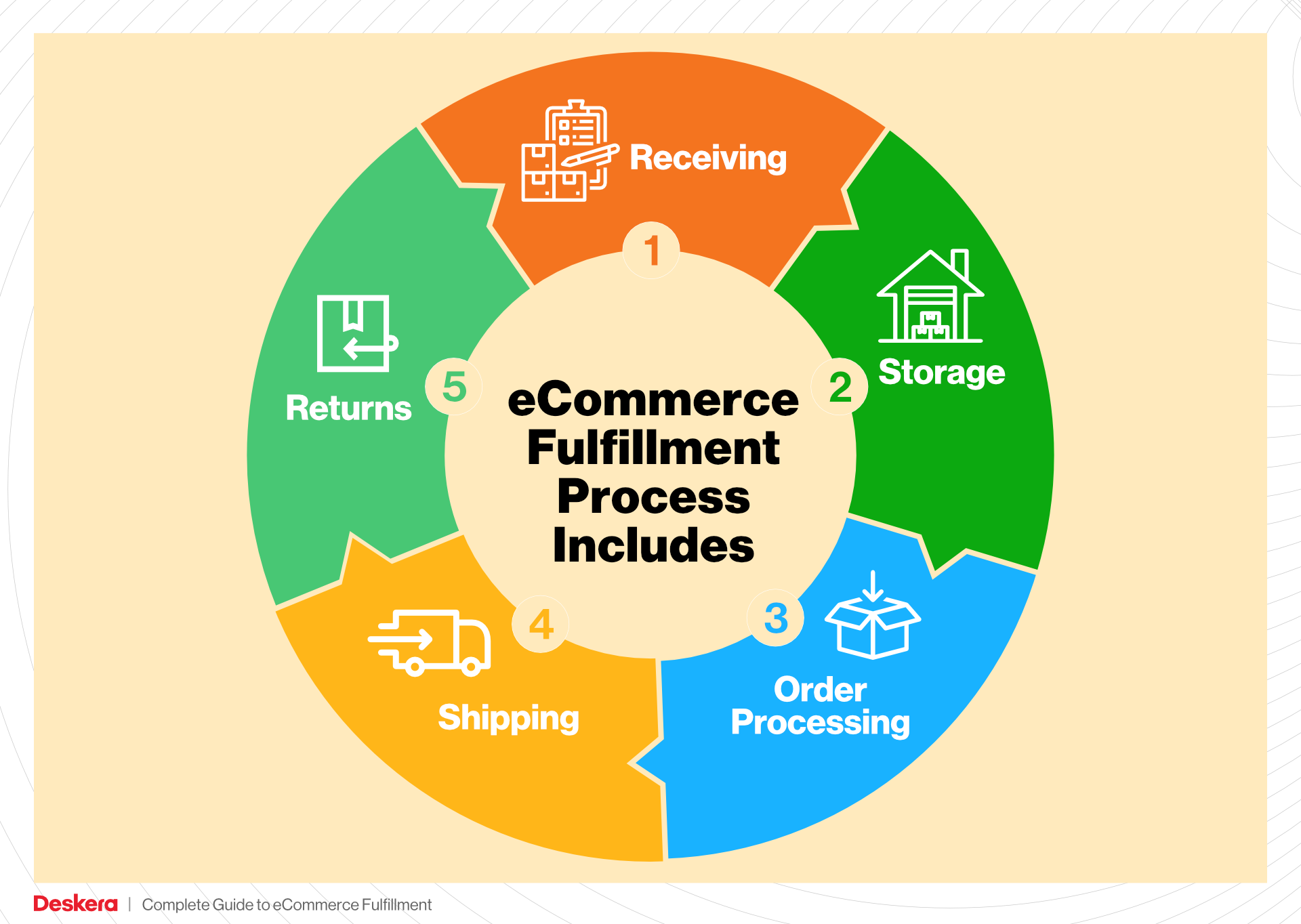
4. Order Packing
After items have been picked, the next step is order packing. This involves preparing the products for shipment by securely packaging them to prevent damage during transit. Key elements of this stage include using appropriate packing materials, creating packing slips, and often incorporating branding elements like custom boxes or branded tape to enhance the customer experience.
Importance: Proper packing is vital for protecting products during shipping and ensuring that they arrive in excellent condition. It also plays a significant role in customer perception; a well-packed order contributes to a positive unboxing experience, reinforcing brand identity and customer satisfaction. Additionally, effective packing can help optimize shipping costs by minimizing dimensional weight and ensuring compliance with carrier requirements.
5. Shipping & Delivery
The final step in the order fulfillment process is shipping and delivery. Once orders are packed, they are handed over to shipping carriers for delivery to customers. This stage involves selecting the appropriate shipping method based on factors like cost, speed, and destination. Key terms associated with this step include shipping labels and tracking numbers, which are essential for monitoring the shipment’s progress and providing customers with updates.
Importance: Efficient shipping and delivery processes are paramount for customer satisfaction. Fast and reliable delivery options can significantly enhance the customer experience and encourage repeat business. Additionally, optimizing shipping logistics can reduce costs, improve delivery times, and streamline operations, allowing businesses to scale effectively. By leveraging technology and partnerships with shipping providers, companies can enhance their fulfillment capabilities, ensuring that products reach customers’ doors promptly.
In conclusion, mastering the order fulfillment process is essential for e-commerce businesses looking to scale. By understanding and optimizing each of these five steps—receiving inventory, warehouse storage, order picking, order packing, and shipping & delivery—business owners can improve efficiency, reduce costs, and ultimately enhance customer satisfaction.
Comparing Fulfillment Models: In-House vs. 3PL vs. Dropshipping
Overview of Fulfillment Models
In the e-commerce landscape, selecting the right fulfillment model is crucial for operational efficiency and customer satisfaction. The three primary models—In-House Fulfillment, Third-Party Logistics (3PL), and Dropshipping—offer distinct advantages and disadvantages, making them suitable for different business stages and strategies. Below is a comparative analysis of these models.
| Model | Who Handles Inventory | Best For (Business Stage) | Key Advantage | Key Disadvantage |
|---|---|---|---|---|
| In-House Fulfillment | Business itself | Established businesses with steady sales | Complete control over inventory and processes | High operational costs and resource demands |
| Third-Party Logistics (3PL) | 3PL provider | Growing businesses needing scalability | Cost-effective, scalable solutions with expertise | Less control over inventory and processes |
| Dropshipping | Supplier | Startups and new entrepreneurs | Low upfront investment, no inventory risk | Lower profit margins and less control over shipping times |
In-House Fulfillment
In-House Fulfillment involves managing the entire order fulfillment process within the business itself. This model is ideal for established businesses that have a steady stream of sales and are looking to maintain complete control over their operations. Companies can tailor their fulfillment processes to meet specific customer expectations, ensuring that every aspect—from inventory management to packaging—is handled in line with their brand standards.
The key advantage of In-House Fulfillment is the level of control it provides. Businesses can directly oversee every aspect of the fulfillment process, which can lead to improved quality assurance and customer service. However, this model comes with significant disadvantages, primarily in terms of cost and resource allocation. Businesses must invest in warehouse space, staffing, and logistics management, which can be a heavy burden, especially for those experiencing fluctuating sales volumes. Additionally, as the business scales, the complexity and operational demands can overwhelm existing resources, potentially impacting service levels.
Third-Party Logistics (3PL)
Third-Party Logistics (3PL) providers offer a robust alternative to In-House Fulfillment, handling various aspects of logistics, including warehousing, inventory management, and shipping. This model is particularly beneficial for growing businesses that require scalability and expertise without the need for heavy investment in logistics infrastructure. 3PL providers leverage their networks and economies of scale to offer competitive shipping rates and efficient operations.
The main advantage of partnering with a 3PL is the ability to focus on core business activities while outsourcing complex logistics tasks. This model allows businesses to scale rapidly without the need to invest in physical infrastructure or staffing. However, the trade-off is a loss of control over inventory and fulfillment processes. Businesses may find it challenging to align their operational standards with those of the 3PL, leading to potential discrepancies in service quality and customer experience. Moreover, if the 3PL faces issues, such as shipping delays or inventory inaccuracies, it can directly impact the business’s reputation.
Dropshipping
Dropshipping is a fulfillment model where the retailer does not hold inventory but instead transfers customer orders and shipment details to the supplier. The supplier then ships the products directly to the customer. This model is particularly appealing for startups and new entrepreneurs because it requires minimal upfront investment and eliminates the risks associated with holding inventory.
The primary advantage of dropshipping is the low barrier to entry, making it accessible for those with limited capital. Entrepreneurs can test various products without the financial commitment of stocking inventory. However, dropshipping also has notable disadvantages. Profit margins tend to be lower since retailers often pay a premium for the convenience of not handling inventory. Additionally, businesses have less control over shipping times and product quality, which can lead to customer dissatisfaction if suppliers fail to meet standards. As a result, businesses relying on dropshipping must carefully vet suppliers and manage customer expectations regarding delivery times and product quality.
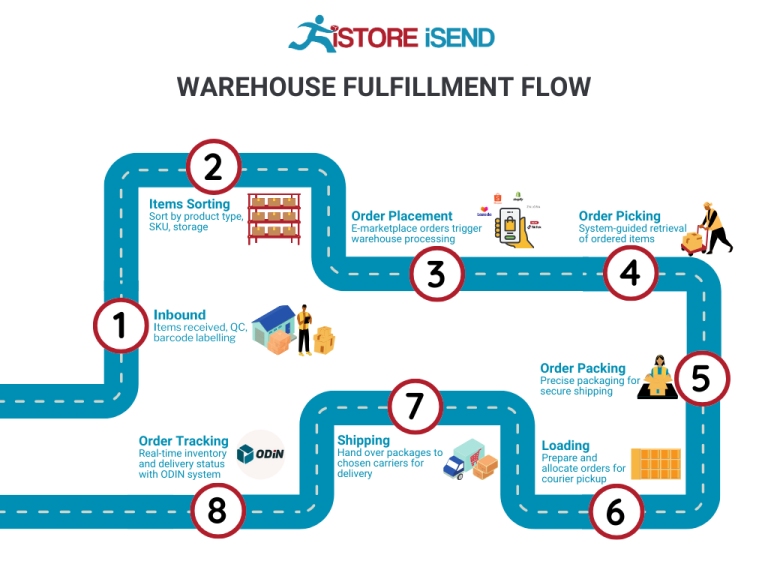
Conclusion
In summary, choosing the right fulfillment model—In-House Fulfillment, 3PL, or Dropshipping—depends on various factors, including business stage, operational capacity, and customer service priorities. In-House Fulfillment offers complete control at a higher cost, 3PL provides scalability and expertise for growing businesses, and Dropshipping allows for a low-risk entry into e-commerce. Understanding the strengths and weaknesses of each model enables business owners to make informed decisions that align with their growth strategies and operational goals.
A Deep Dive into Amazon FBA: Pros, Cons, and Who It’s For
Understanding Fulfillment by Amazon (FBA)
Fulfillment by Amazon (FBA) is a service that allows e-commerce sellers to store their products in Amazon’s fulfillment centers. Amazon takes care of storage, packaging, and shipping of products on behalf of sellers. This service is designed to simplify the logistics of online selling, making it easier for businesses to focus on growth while leveraging Amazon’s extensive logistics network.
When a customer places an order for a product fulfilled by Amazon, the product is picked, packed, and shipped directly from Amazon’s warehouse. Additionally, Amazon handles customer service and returns for these orders, providing a comprehensive solution for sellers looking to scale their operations.
How FBA Works
-
Account Setup: Sellers begin by creating an Amazon seller account and enrolling in the FBA program.
-
Inventory Preparation: Products must be prepared according to Amazon’s guidelines, which include labeling and packaging standards.
-
Shipping Inventory to Amazon: Sellers send their inventory to Amazon’s designated fulfillment centers. Amazon provides shipping plans to help sellers manage this process efficiently.
-
Storage and Management: Once the inventory arrives at Amazon, it is stored in their warehouses. Sellers can manage their inventory through the Amazon seller dashboard, where they can track stock levels and product performance.
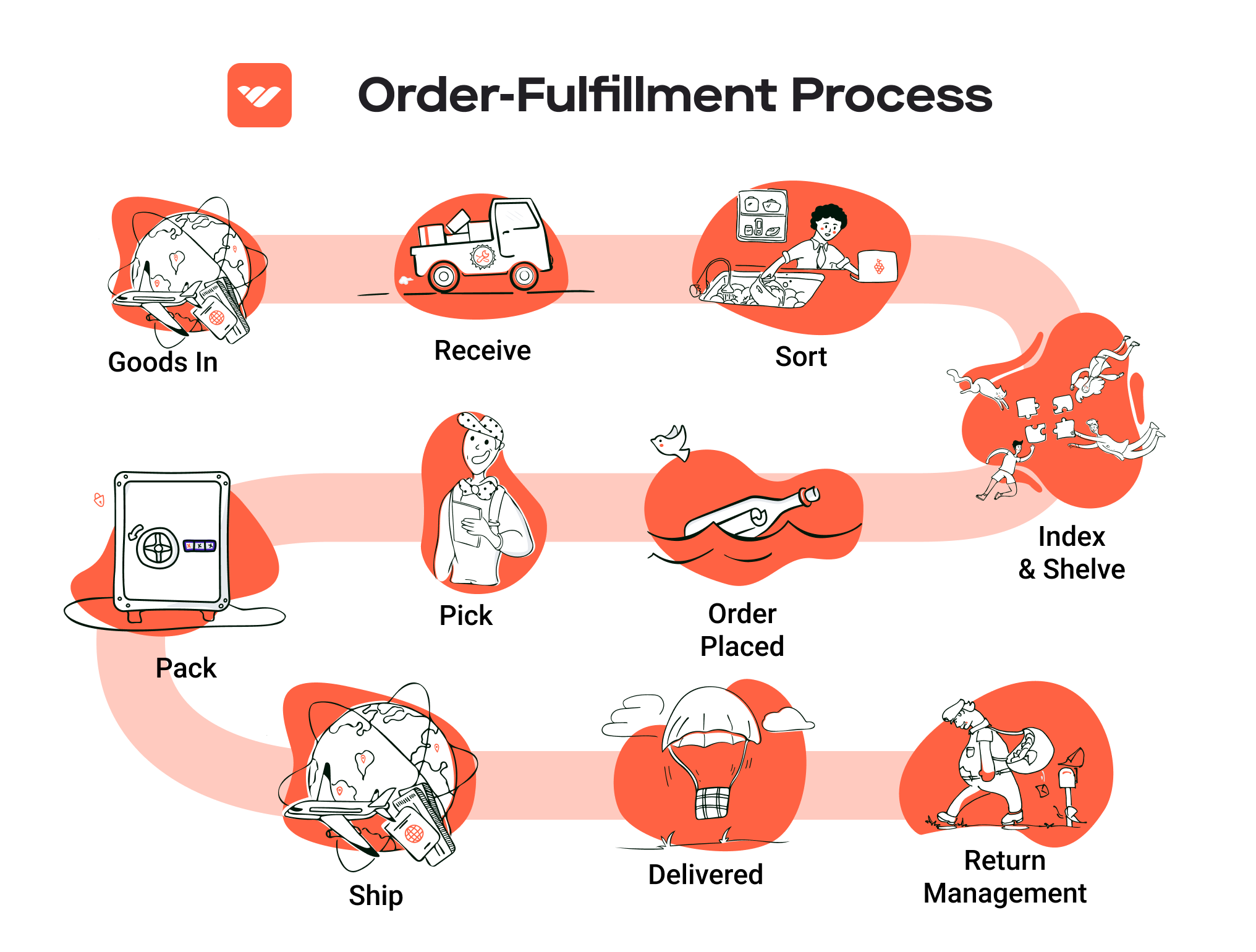
-
Order Fulfillment: When a customer orders a product, Amazon takes care of the entire fulfillment process, including picking, packing, and shipping.
-
Customer Service and Returns: Amazon handles customer inquiries and returns, ensuring a smooth post-purchase experience.
Pros of Using FBA
1. Prime Eligibility
One of the standout features of FBA is that products fulfilled by Amazon are eligible for Amazon Prime. This not only enhances product visibility but also attracts a loyal customer base that prefers the benefits of Prime membership, such as free two-day shipping.
2. Customer Trust
Amazon has established itself as a trusted marketplace. By using FBA, sellers benefit from Amazon’s reputation, which can lead to higher conversion rates. Customers often feel more secure purchasing items that are fulfilled by Amazon due to their reliable shipping and customer service.
3. Multi-Channel Fulfillment
FBA isn’t just limited to sales on Amazon. Sellers can use FBA for orders from other sales channels as well, including their own websites or other marketplaces. This multi-channel fulfillment capability allows for streamlined operations and inventory management across various platforms.
4. Simplified Logistics
FBA simplifies the logistics of order fulfillment. Sellers can focus on other aspects of their business, such as marketing and product development, without worrying about the complexities of shipping and handling.
5. Scalable Operations
FBA allows businesses to scale quickly. As order volume increases, sellers can send larger quantities of inventory to Amazon without needing to invest in their own warehousing and fulfillment infrastructure.
Cons of Using FBA
1. High Fees
While FBA offers numerous benefits, it comes at a cost. Sellers are subject to various fees, including storage fees, fulfillment fees, and additional charges for long-term storage. These costs can significantly eat into profit margins, especially for low-cost items.
2. Strict Inventory Rules
Amazon has strict guidelines regarding inventory management. Sellers must comply with these rules, which can include limits on the quantity of certain products that can be stored at fulfillment centers. Failure to comply can result in additional fees or even account suspension.
3. Commingling Risks
FBA uses a commingled inventory model, meaning that products from different sellers may be stored together. This can lead to challenges, such as receiving returns from customers that are not originally yours or dealing with counterfeit products, which can damage your brand reputation.
4. Limited Control Over Shipping
While Amazon handles shipping, sellers have limited control over the shipping process. This can be a disadvantage for businesses that want to maintain a specific branding experience in their packaging or shipping methods.
5. Dependency on Amazon
Using FBA means relying heavily on Amazon’s platform and policies. Changes in Amazon’s algorithms or policies can directly impact sales and operations, leaving sellers vulnerable to shifts outside their control.
Who is FBA Best For?
Fulfillment by Amazon is particularly well-suited for:
-
Small to Medium-Sized Businesses: Companies looking to scale quickly without investing heavily in their own logistics infrastructure will find FBA beneficial.
-
E-commerce Entrepreneurs: New sellers who want to leverage Amazon’s trusted marketplace and logistics capabilities can gain a significant advantage by using FBA.
-
Brands with High Turnover Products: Businesses selling products that have a high turnover rate can benefit from the efficiency of FBA, as it allows for quick replenishment and fulfillment.
-
Sellers Seeking Global Reach: Companies aiming to reach international markets can utilize FBA’s global shipping capabilities, allowing them to tap into Amazon’s vast customer base worldwide.
-
Multi-Channel Sellers: Businesses that sell across various platforms and want a streamlined fulfillment process will find FBA’s multi-channel capabilities particularly advantageous.
In conclusion, while Fulfillment by Amazon offers significant benefits, it is crucial for sellers to weigh these against the potential drawbacks. Understanding your business model and growth strategy will help determine if FBA is the right fulfillment solution for your e-commerce needs.
Core Services Offered by Fulfillment Centers
Inventory Management & Warehousing
Inventory management and warehousing are foundational services provided by fulfillment centers, essential for e-commerce businesses aiming to optimize their operations. This service includes the storage of goods in a secure facility, along with systems to track inventory levels, manage stock, and forecast demand.
The benefit of robust inventory management is multifaceted. Firstly, it ensures that you have the right amount of product on hand, reducing the risk of stockouts or overstock situations. Advanced tracking systems enable real-time updates on inventory levels, allowing for proactive replenishment and minimizing holding costs. Additionally, many fulfillment centers utilize automated systems that integrate seamlessly with e-commerce platforms, providing insights into sales trends and inventory turnover. This not only streamlines the supply chain but also empowers businesses to make informed decisions about purchasing and inventory allocation, ultimately driving profitability.
Pick and Pack Services
Pick and pack services are crucial for the efficiency of order fulfillment. This process involves selecting the correct items from inventory (picking) and packing them securely for shipment (packing). Fulfillment centers employ trained staff and sophisticated technology to ensure accuracy and speed in this process.
The primary advantage of effective pick and pack services is the improvement of order accuracy and delivery speed. With a high accuracy rate, businesses can minimize errors that lead to customer dissatisfaction and costly returns. Additionally, many fulfillment centers are equipped with automated systems that enhance picking efficiency, allowing for quicker turnaround times. This means that customers receive their orders faster, which is a significant competitive advantage in today’s e-commerce landscape where consumers increasingly expect rapid delivery. Furthermore, personalized packing options, such as branded boxes or custom packing materials, can enhance the unboxing experience, reinforcing brand loyalty and customer satisfaction.
Kitting and Assembly
Kitting and assembly services involve grouping multiple products into a single package or preparing products for sale. This could include assembling components of a product before shipping or creating gift sets that combine various items. Fulfillment centers provide this service to streamline the logistics of selling bundled products.
The benefit of kitting and assembly lies in its ability to enhance operational efficiency and customer appeal. By having a fulfillment center manage these processes, businesses can save time and reduce labor costs associated with in-house assembly. Additionally, offering kitted products can increase average order value as customers are often more inclined to purchase bundled items. This service also allows for the customization of product offerings, enabling businesses to cater to specific customer needs or seasonal trends, thus driving higher sales volumes.
Returns Management (Reverse Logistics)
Returns management, often referred to as reverse logistics, is an essential service offered by fulfillment centers that can significantly impact customer satisfaction and overall business efficiency. This service involves handling the entire process of returns, from receiving the returned items to inspecting, restocking, and processing refunds or exchanges.
The benefits of an effective returns management system are critical for maintaining customer trust and loyalty. In today’s e-commerce environment, consumers expect hassle-free return processes. A well-organized returns management service can streamline this experience, allowing for quick inspections and updates to inventory levels. This not only keeps customers happy but also minimizes the financial impact of returns on the business. Furthermore, efficient returns processing can lead to valuable insights into product performance and customer preferences, helping businesses refine their offerings and reduce future return rates.
In conclusion, partnering with a fulfillment center that provides comprehensive services such as inventory management, pick and pack, kitting and assembly, and returns management can significantly enhance an e-commerce business’s operational efficiency, customer satisfaction, and scalability. By leveraging these services, businesses can focus on growth and customer engagement while leaving the complexities of logistics to the experts.
How to Choose a Fulfillment Partner: A 6-Point Checklist
Location & Warehouse Network
Importance:
The geographical location of a fulfillment partner’s warehouses significantly impacts shipping costs and delivery times. A partner with a strategically located network can help reduce transit times and costs, leading to improved customer satisfaction and lower overhead.
Questions to Ask:
– How many fulfillment centers do you operate, and where are they located?
– Can you distribute my inventory across multiple warehouses to optimize shipping costs?
– What is your average shipping time to key markets?
Technology & Integrations
Importance:
An efficient fulfillment process relies heavily on technology. A partner that offers robust technology solutions and integrations with your existing systems (e.g., e-commerce platforms, inventory management tools) can streamline operations, reduce errors, and provide real-time visibility into your inventory and orders.
Questions to Ask:
– What technology do you use for order management and inventory tracking?
– Do you offer integrations with popular e-commerce platforms like Shopify, WooCommerce, or Amazon?
– How do you ensure data security and reliability in your technology?
Specializations
Importance:
Different businesses have unique needs based on their product types. A fulfillment partner with specific expertise in handling certain categories—such as cold storage for perishables, handling oversized items, or managing subscription boxes—can provide tailored services that ensure your products are handled correctly.
Questions to Ask:
– Do you have experience in fulfilling orders for my product category?
– What special handling procedures do you have for items that require temperature control or extra care?
– Can you accommodate unique packaging or kitting requirements?
Scalability & Capacity
Importance:
As your business grows, your fulfillment needs will change. A partner that can scale with you—whether it’s accommodating increased order volumes during peak seasons or expanding service offerings—will be vital to your long-term success. Ensuring they have the capacity to handle your growth is crucial.
Questions to Ask:
– What is your current capacity for handling orders, and how do you manage peak season fluctuations?
– Can you provide examples of how you’ve scaled your operations for other clients?
– What measures do you have in place to ensure you can accommodate sudden increases in order volume?
Pricing and Contracts
Importance:
Understanding the cost structure and contract terms is essential for budgeting and financial planning. Look for transparency in pricing to avoid hidden fees that can erode your profit margins. Additionally, flexible contract terms can be beneficial for businesses that are still growing or testing new markets.
Questions to Ask:
– What is your pricing model (e.g., per order, per item, monthly fees)?
– Are there any hidden fees, such as for setup, storage, or integrations?
– What are the terms of the contract? Is there flexibility for scaling up or down based on my business needs?
Customer Support & Reviews
Importance:
Responsive customer support can make or break your experience with a fulfillment partner. Issues will arise, and having a dedicated support team that is easy to reach can save time and prevent costly delays. Additionally, researching reviews and testimonials can provide insight into the partner’s reliability and service quality.
Questions to Ask:
– What customer support options do you offer (e.g., phone, email, chat)?
– What are your average response times for support inquiries?
– Can you provide references or case studies from similar businesses you’ve worked with?
Conclusion
Choosing the right fulfillment partner is critical for the success of your e-commerce business. By carefully considering these six key areas—Location & Warehouse Network, Technology & Integrations, Specializations, Scalability & Capacity, Pricing and Contracts, and Customer Support & Reviews—you can make an informed decision that aligns with your business goals and enhances your overall operational efficiency. Always ensure you have open lines of communication and that your potential partner understands your unique business needs to foster a successful partnership.
Understanding Fulfillment Pricing: A Breakdown of Common Fees
Initial Setup Fees
Initial setup fees are one-time charges that e-commerce businesses may incur when partnering with a fulfillment provider. These fees typically cover the costs associated with onboarding, which can include account setup, integration with your e-commerce platform, and initial inventory management configurations.
The calculation of initial setup fees can vary significantly among providers. Some may charge a flat fee, while others might base the fee on the volume of products or the complexity of the setup. It’s essential to clarify what the setup fee covers—some providers offer promotions that waive these fees entirely for new customers or under specific conditions, such as minimum order commitments.
Receiving Fees
Receiving fees are charged when your inventory arrives at the fulfillment center. This fee compensates the provider for unloading, inspecting, and logging the incoming products into their inventory management system.
Typically, receiving fees are calculated based on the volume of goods received, often measured in weight or the number of pallets. Providers may also charge additional fees for special handling requirements, such as sorting or repackaging. Understanding the receiving fee structure is crucial, especially if you plan to ship large quantities of products frequently.
Storage Fees (per pallet/bin)
Storage fees are ongoing charges for keeping your inventory in the fulfillment center. These fees can be billed monthly or quarterly and are generally calculated based on the space your inventory occupies, typically measured in pallets or bins.
There are two common structures for storage fees:
- Per Pallet: This model charges a fixed rate for each pallet stored, making it easy to estimate costs based on your inventory volume.
- Per Bin: This model is often used for smaller items, charging a fee based on the number of bins occupied.
Some fulfillment providers may also have tiered pricing that decreases the cost per pallet or bin as you scale up your inventory, which can be advantageous for growing businesses.
Pick & Pack Fees (per item/order)
Pick and pack fees are charged for the labor involved in retrieving items from storage and preparing them for shipment. This fee can vary based on several factors, including the number of items in an order and the complexity of the packing requirements.
Typically, pick and pack fees are calculated as follows:
- Per Item: A fee is charged for each item picked and packed.
- Per Order: A flat fee is charged for each order processed, regardless of the number of items.
Some providers may offer bundled pricing or discounts for high-volume orders, making it essential to assess your expected order volume and complexity when estimating these costs.
Shipping Fees
Shipping fees are among the most significant costs associated with fulfillment and can vary widely depending on several factors, including the shipping method, destination, package dimensions, and weight. Fulfillment providers typically negotiate rates with carriers, and these savings can be passed on to you as a customer.
Shipping fees can be broken down into:
- Domestic Shipping: Charges for shipments within the same country, which may include standard, expedited, and overnight options.
- International Shipping: Costs associated with sending products across borders, which can also involve customs duties and taxes, potentially complicating the pricing structure.
To get a clearer picture of your shipping costs, inquire about the provider’s partnerships with carriers and any volume discounts they may offer.
Tips for Getting an Accurate Quote
To ensure you receive an accurate and comprehensive quote from a fulfillment provider, consider the following tips:
-
Provide Detailed Information: Be specific about your inventory size, product types, order volume, and any special handling requirements. The more information you provide, the more accurate the quote will be.
-
Ask About All Fees: Ensure you inquire about all potential fees, including hidden charges that might apply to your specific situation, such as returns management or special packaging.
-
Negotiate Terms: Don’t hesitate to discuss pricing options, especially if you expect to scale your business. Many providers are willing to negotiate fees based on anticipated volume.
-
Compare Multiple Providers: Obtain quotes from several fulfillment providers to compare pricing structures and services offered. This will help you make a more informed decision.
-
Review Contracts Thoroughly: Before signing any agreement, read through the terms to understand any long-term commitments, cancellation policies, and fee structures.
By understanding these common fulfillment pricing models and following the tips for obtaining quotes, you can make informed decisions that align with your business goals and budget constraints.
Frequently Asked Questions (FAQs) about Fulfillment
1. What is a fulfillment provider?
A fulfillment provider is a third-party logistics (3PL) company that handles the storage, packing, and shipping of products on behalf of e-commerce businesses. They manage the entire supply chain process, ensuring that orders are processed efficiently and delivered to customers in a timely manner.
2. What is the difference between a warehouse and a fulfillment center?
While both warehouses and fulfillment centers store goods, their functions differ significantly. A warehouse primarily focuses on inventory storage and may not handle order processing. In contrast, a fulfillment center is designed specifically for order fulfillment, including picking, packing, shipping, and returns management, thereby streamlining the e-commerce logistics process.
3. What is a 3PL?
A 3PL, or third-party logistics provider, is a service that manages a company’s logistics and supply chain operations. This includes warehousing, transportation, and fulfillment services. By outsourcing these operations to a 3PL, businesses can focus on their core activities, such as marketing and product development, while benefiting from the 3PL’s expertise and resources.
4. How much do fulfillment services cost?
The cost of fulfillment services varies based on several factors, including order volume, the complexity of the products, storage requirements, and shipping destinations. Typically, fulfillment providers charge per order processed, storage fees based on inventory volume, and shipping costs. It’s essential to obtain quotes from multiple providers to compare pricing structures and choose the best fit for your business.
5. How long does it take to fulfill an order?
Order fulfillment times can vary depending on the fulfillment provider and the shipping method chosen. Generally, most fulfillment centers aim to process orders within 1-2 business days. Additionally, shipping times will depend on the carrier and the destination, with options for expedited delivery available for faster service.
6. Can I customize packaging and unboxing experiences?
Yes, many fulfillment providers offer customizable packaging options to enhance your brand’s identity. This can include branded boxes, personalized packing slips, and unique unboxing experiences designed to impress customers and strengthen brand loyalty.
7. How do I integrate my e-commerce platform with a fulfillment provider?
Most fulfillment providers offer integration with popular e-commerce platforms through APIs or pre-built connectors. This allows for seamless synchronization of inventory, orders, and shipping updates. Be sure to check the provider’s integration capabilities and support for your specific e-commerce platform.
8. What happens if there’s an issue with my order?
Reputable fulfillment providers have processes in place to handle order discrepancies, such as incorrect items or damaged products. They typically offer support for returns, replacements, and order tracking to address customer concerns. It’s crucial to review the provider’s policies on order accuracy and customer service responsiveness.
9. How do I manage inventory with a fulfillment provider?
Fulfillment providers often offer real-time inventory management systems that allow you to track stock levels, set reorder alerts, and manage inventory across multiple locations. This ensures that you can maintain optimal stock levels and avoid stockouts or overstock situations.
10. What should I consider when choosing a fulfillment provider?
When selecting a fulfillment provider, consider factors such as their experience in your industry, service offerings, geographic reach, technology integrations, pricing structure, and customer support. It’s important to choose a partner that aligns with your business goals and can scale with your growth.
Conclusion: Is Outsourcing Fulfillment the Right Move for Your Business?
Evaluating the Benefits of Outsourcing Fulfillment
Outsourcing your fulfillment can be a transformative decision for your e-commerce business, offering several compelling advantages. First and foremost, partnering with a fulfillment service allows you to save time. By handing over the complexities of warehousing, inventory management, and shipping logistics to experts, you can refocus your efforts on core business strategies like marketing, product development, and customer engagement. This shift not only boosts productivity but also enhances your ability to respond to market demands swiftly.
In addition, utilizing a fulfillment partner provides scalability. As your business grows, so do your logistical needs. A reputable fulfillment provider can adapt to increasing order volumes and geographic expansions without the need for significant upfront investments in infrastructure. This flexibility is crucial for maintaining efficiency and customer satisfaction, especially during peak seasons or promotional events.
Moreover, fulfillment services come with expertise that many in-house operations may lack. These partners are seasoned in navigating the complexities of shipping regulations, tariff implications, and international logistics. By leveraging their knowledge, you can mitigate risks associated with fulfillment, ensuring compliance and optimizing costs.
However, the choice of a fulfillment partner is critical. Selecting the right provider can significantly influence your operational efficiency and customer satisfaction. It’s essential to conduct thorough research, considering factors such as technology integration, shipping options, and customer service.
Take Action
To determine if outsourcing fulfillment is the right move for your business, start by conducting an audit of your current shipping process. Assess your pain points, costs, and growth potential. This evaluation will provide clarity on whether a fulfillment partner could enhance your operations, streamline your logistics, and ultimately help you scale effectively. Don’t hesitate to explore your options; the right partnership could be the key to unlocking your business’s full potential.
Important Disclaimer
⚠️ Important Disclaimer
The information in this guide is for educational purposes. Fulfillment services, pricing, and platform features change frequently. Always conduct your own due diligence and consult with providers directly before making business decisions.
